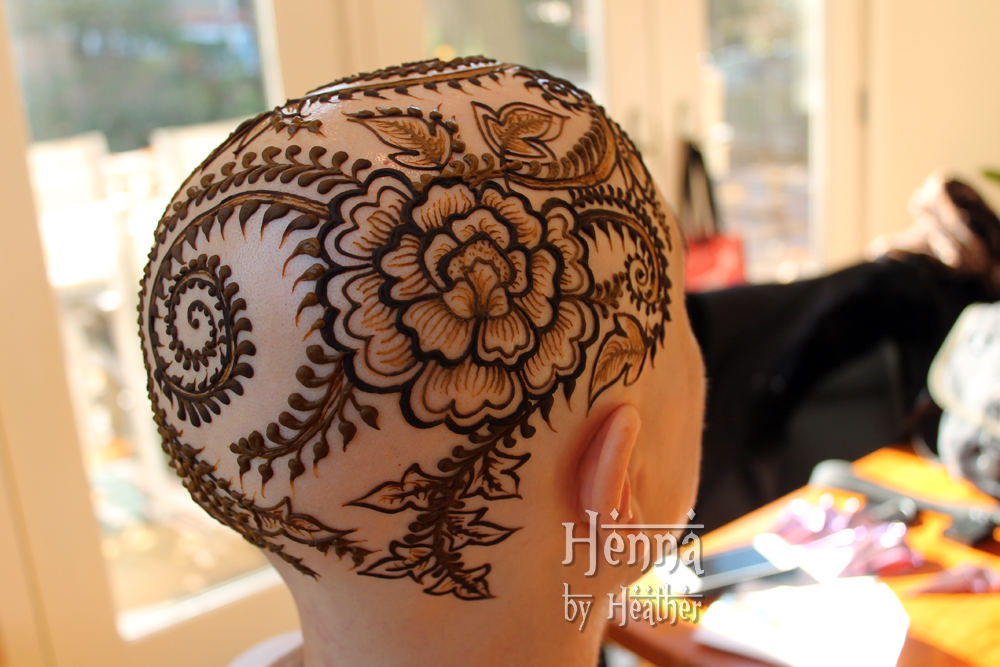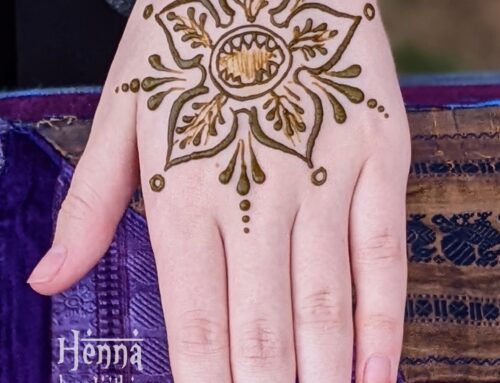 Henna by Heather – an average henna stain with standard recipe used.
Henna by Heather – an average henna stain with standard recipe used.
This list is provided for potential clients who would like to know exactly what is in their henna paste, and what possible alternatives are. We love our standard paste recipe for its combination of staining power, paste longevity, and – a bit more frivolously – scent, but we are happy to make changes when needed. You can use this list to consult a doctor for medical advice about the getting henna applied when there is any medical concern. This may include, but is not limited to, chemotherapy, radiation, medications, pregnancy, allergies, etc.
If you’ve been researching henna, we hope that you’ve come across the warning on our own website and elsewhere about the dangers of so-called “black henna”, which is actually not henna at all, but rather a chemical called para-phenylendiamine (PPD for short). You can be assured that we absolutely, never, under any conditions use this harmful chemical in our henna, and actively educate the public against its use!
We know the importance of assuring that anything going on or in your body is gluten free if you have Celiac’s disease. Our henna is made in a household with someone with Celiac’s disease, and we avoid cross-contamination in our henna paste with the same diligence as we do when cooking meals for our own family.
This list may be used by other professional henna artists – artists, just send your potential clients a link to this page directly.
Some people who may find this list useful: people going through chemo (chemotherapy) and would like a henna crown or other henna design, people with allergies, people wondering what different ingredient substitutions will make in a henna recipe.
Standard Henna Paste Recipe Ingredients:
100g Henna leaves (EcoCert certified Artistic Organic Rajasthani henna from Artistic Adornment is always an available option, or Mohana is our other favorite)
1.25 cups Lemon juice (bottled, typically RealLemon brand)
2 Tbsp / 30ml Cajeput essential oil (a relative of tea tree)
1 drop Lemongrass essential oil
1 drop Sweet Orange essential oil
Possible substitutions and changes that will have no negative impact on henna design color or process:
-leave out lemongrass and/or sweet orange oil, which are there only for scent
-switch in USDA certified organic lavender (lavandula angustifolia) essential oil for cajeput essential oil
-switch in hand-squeezed or certified organic lemon juice for bottled lemon juice
Possible substitutions that change the overall process of mixing the henna, but do not significantly change the ultimate design color:
-switch in black tea rather than lemon juice
-switch in apple juice rather than lemon juice
Possible substitutions that may result in less intense henna design color:
-leave out all essential oils (this will always yield a less intense henna stain color)
-mix with water rather than lemon juice (not inherently a problem for the color if used within the proper time frame, but makes a much less stable henna paste that must be used within an hour)
Standard changes we typically make:
-For chemo patients, use black tea or apple juice, and a small amount of lavender essential oil
-For pregnant women, use lavender essential oil
We are happy to custom blend your henna to meet your needs.


